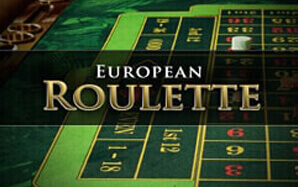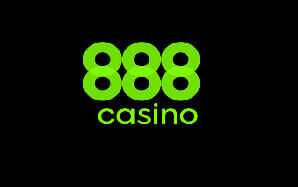How to Play Roulette: A Step-by-Step Guide
Roulette is a simple yet thrilling game. Here’s how a round of play unfolds:
- 1. Players place their bets by putting chips on the betting table.
- 2. The croupier spins the wheel and releases the ball.
- 3. The ball lands in a numbered slot on the wheel.
- 4. Winners are determined based on where the ball lands.
- 5. Payouts are made, and a new round begins.
The Roulette Wheel: Variants and Features
The Roulette wheel is an essential part of the game, determining the outcome of each spin. Different variants of the game use different wheel layouts, affecting the house edge and betting options.
European Roulette
This is the most popular version in online and land-based casinos. It features 37 pockets numbered 0 to 36. The single zero (0) gives the house a lower edge of 2.7%, making it the preferred choice for players looking for better odds.
American Roulette
Unlike European Roulette, the American version includes an extra double zero (00), bringing the total number of pockets to 38. This increases the house edge to 5.26%, making it less favorable for players. The additional double zero impacts some betting strategies and changes the probability of landing on certain numbers.
French Roulette
Similar to European Roulette, French Roulette also has 37 pockets but introduces special rules such as:
- La Partage Rule: If you place an even-money bet (e.g., red/black) and the ball lands on 0, you get half of your bet back.
- En Prison Rule: If the ball lands on 0, your even-money bet is "locked" for the next spin. If you win on the next spin, you recover your original bet.
These rules reduce the house edge on even-money bets to 1.35%, making French Roulette the best option for strategic players.
Live Dealer Roulette
Live Roulette replicates the land-based casino experience with real dealers streaming the game in real-time. Some notable versions include:
- Lightning Roulette: A high-paced version where random numbers receive special multipliers (up to 500x) for bigger payouts.
- Double Ball Roulette: Two balls are used per spin, creating more winning opportunities but requiring a different betting approach.
- Auto Roulette: A fast-paced, automated version where spins occur continuously without a dealer.
Other Roulette Variants
Aside from the traditional versions, there are a few niche variations that provide different twists on the game:
- Mini Roulette: A smaller version with only 13 numbers (0-12), offering faster gameplay but slightly different odds.
- Multi-Wheel Roulette: Allows players to bet on multiple Roulette wheels simultaneously, increasing excitement and potential wins.
- 3D Roulette: A visually enhanced version that provides a more immersive experience but follows standard European rules.
Understanding the Betting Table and How to Place Bets
The Roulette betting table is divided into two main sections: inside bets and outside bets. Each type of bet has different payouts and probabilities.
![Roulette bets]()
Inside Bets
These bets involve specific numbers or small groups of numbers and typically offer higher payouts.
- Straight Up Bet: Place a chip directly on a single number (0-36). This has the highest payout of 35 to 1 but the lowest probability.
- Split Bet: Place a chip on the line between two adjacent numbers. If either number wins, the payout is 17 to 1.
- Street Bet: Place a chip at the edge of a row, covering three consecutive numbers. Pays 11 to 1.
- Corner Bet: Place a chip at the intersection of four numbers, covering all four. Pays 8 to 1.
- Five Number Bet (Only in American Roulette): Covers 0, 00, 1, 2, and 3 by placing a chip on the corner between 0 and 1. Pays 6 to 1 but has the worst odds.
- Six Line Bet: Covers two adjacent rows (six numbers) by placing a chip at the edge where the two rows meet. Pays 5 to 1.
Outside Bets
These bets cover larger groups of numbers and offer lower payouts but higher winning chances.
- Red or Black: Place a chip on the red or black section to bet on the color. Pays 1 to 1.
- Odd or Even: Bet on whether the number will be odd or even. Pays 1 to 1.
- High or Low: Bet on numbers 1-18 (Low) or 19-36 (High). Pays 1 to 1.
- Dozens Bet: Bet on one of three groups (1-12, 13-24, or 25-36). Pays 2 to 1.
- Column Bet: Bet on one of three vertical columns (12 numbers each). Pays 2 to 1.
How to Place Bets
To place a bet, simply drag and drop your chips onto the desired field on the betting table. Some additional betting options include:
- Call Bets (Available in French Roulette): These are pre-set bets that cover sections of the wheel, such as Voisins du Zéro, Orphelins, and Tiers du Cylindre.
- Neighbor Bets: A specific number plus the two numbers on either side of it on the wheel.
Roulette Strategies to Know
Several betting strategies exist, each with its risks and rewards:
- Martingale System: Double your bet after a loss to recover previous losses.
- D'Alembert System: Increase your bet by one unit after a loss and decrease by one after a win.
- Fibonacci Strategy: Follows a mathematical sequence (1, 1, 2, 3, 5...) for betting adjustments.
- James Bond Strategy: Covers multiple numbers with a mix of high and low bets.
How to Choose an Online Casino for Roulette
Before signing up, consider these factors:
- Game Selection: Look for European and French Roulette for lower house edges.
- Bonuses: Check for live casino promotions or table game bonuses.
- Payment Methods: Ensure they support your preferred deposit and withdrawal options.
- Licensing: Choose a regulated casino with fair play certification.
- Customer Support: Reliable 24/7 service is ideal.
Roulette Strategies Explained
There are multiple betting strategies in Roulette, each with a different approach to managing bets and risk.
Martingale Strategy
Involves doubling your bet after each loss, aiming to recover losses when you eventually win. Best for even-money bets (Red/Black, Odd/Even), but requires a large bankroll to sustain losing streaks.
D'Alembert Strategy
A more conservative approach where you increase your bet by one unit after a loss and decrease it after a win. Helps manage risk but requires patience.
Fibonacci Strategy
Follows a mathematical sequence (1, 1, 2, 3, 5, 8...) where you increase bets according to the sequence after a loss. A win resets the sequence back two steps.
Labouchere System
Uses a written sequence of numbers. You bet the sum of the first and last numbers in the sequence. If you win, you cross out those numbers; if you lose, you add the lost amount to the sequence. The goal is to clear the list.
James Bond Strategy
A fixed bet strategy where you place three bets at once: high numbers (19-36), six numbers (13-18), and a single bet on zero. Aims to cover most numbers but has its risks.
Reverse Martingale
Instead of doubling after a loss, you double your bet after each win, aiming to capitalize on winning streaks. Can be profitable but carries the risk of losing accumulated winnings in one bad spin.
Roulette Myths & Fun Facts
- Myth: "Roulette wheels are rigged." – Licensed casinos use random number generators and certified equipment.
- Fact: The sum of all Roulette numbers (1-36) equals 666, earning it the nickname "The Devil’s Game."
- Fact: A gambler won $3.5 million at the Ritz Casino using predictive physics techniques.
Frequently Asked Questions about Roulette
Is there a difference between online and land-based Roulette?
Yes, online Roulette can be played against a computer (RNG-based) or in a live dealer setting. Land-based casinos offer a social experience, while online play provides convenience and game variety.
What is the best Roulette strategy?
No strategy guarantees success, but systems like the Martingale and Fibonacci can help manage bets. The best approach is responsible bankroll management.
How do I choose the best online casino for Roulette?
Consider factors like game variety, bonuses, payment methods, and security. Reading expert reviews can help identify reputable sites.
What happens if the ball lands on 0?
If the ball lands on 0, even-money bets (red/black, odd/even) lose, unless special rules like 'La Partage' or 'En Prison' apply.


 Canada
Canada India
India Suomi
Suomi Svenska
Svenska





